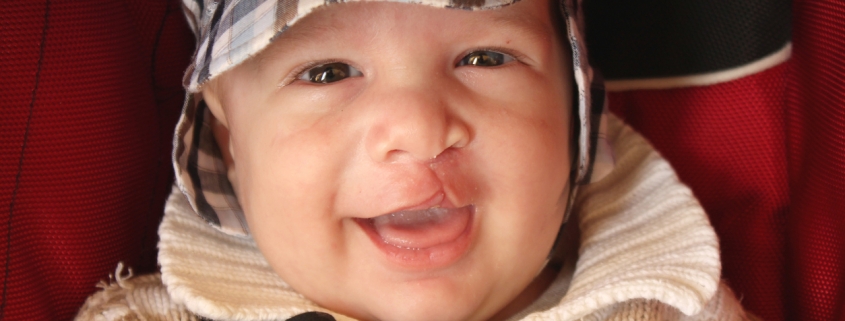Cleft Lip
What is a cleft lip?
A cleft lip is a type of facial abnormality that affects parts of the face that do not connect the upper lip and mouth before birth, and babies are born with a cleft lip. These slits can also occur on the roof of the baby’s mouth or palate. This complication occurs early in fetal development due to genetic or environmental factors.
What problems does cleft lip cause for children?
Dental problems: In people with cleft lip, the teeth usually do not grow properly. Teeth may be malformed or misaligned. Irregular teeth affect the appearance of the child and cause them more orthodontic problems.
Chewing problems: Irregular teeth always cause chewing problems for patients. One of the most common problems is that food or fluids may return from the mouth to the nose. To solve this problem, they designed prostheses that allow fluids to flow to the stomach. You can use this prosthesis until the problem of sugar lips is solved.
Speech problems: Cleft lip and palate make it difficult for a child to speak clearly. Talking in the mind of these people is one of their speech problems.
Side effects of cleft lip include recurrent colds, sore throats, ear infections, and tonsillar and adenoid (third tonsil) problems. People with cleft lip and palate accumulate fluid in the middle ear, which increases the risk of ear infections. If left untreated, the patient may become deaf forever.
Can cleft lip be treated with orthodontics? In children with cleft lip, the best time for treatment is between three and six months, which is done by surgery. Craniofacial orthodontic surgeon and a specialist team must be present for surgery.
Babies born with cleft lip usually have more dental problems, so they should have regular orthodontic examinations. Having extra teeth, fewer teeth than normal people, narrow maxilla and crooked teeth are some of the problems that should be treated by orthodontics. Because irregular teeth are very difficult to care for and clean, and the possibility of decay increases.
In general, patients under the age of 21 who are being treated for cleft lip and palate should also receive orthodontic care. When all the diseased teeth have grown, the teeth are arranged orthodontically. Some people who have a cleft lip have a cut in the front gum that needs surgery and a bone graft, which must be done by an orthodontist and incision surgeon. In addition, people with cleft lip and palate may need orthodontic surgery to align the jaw.
How many steps does orthodontic treatment have for cleft lip people?
People who undergo cleft lip treatment should also receive orthodontic treatment. The stages of orthodontic treatment for cleft lip people are divided into four stages.
- Neonatal period and before orthodontic surgery. 3 to 6 months is the best time for surgery and treatment of neonatal cleft lip. Craniofacial orthodontists use neonatal orthodontics to treat cleft lip and palate.
- Necessary care of deciduous teeth. The condition of the baby’s bone is first examined to make sure the baby can have a bone graft. Treatment begins at 8 to 9 years of age and continues until 10 years of age. The jaw should be flattened so that the baby’s teeth fit together well. Bone graft surgery should be performed to repair lost bone tissue.
- Necessary care in the mixed dental period when both deciduous and permanent teeth have grown. At the age of 12 to 13, when a child’s permanent teeth have grown, they must use fixed braces to arrange them.
- Treatment when permanent teeth have grown. Bone incision surgery is used to treat dental arch correction. For surgery, the patient must be 18 years old to have a successful outcome.

